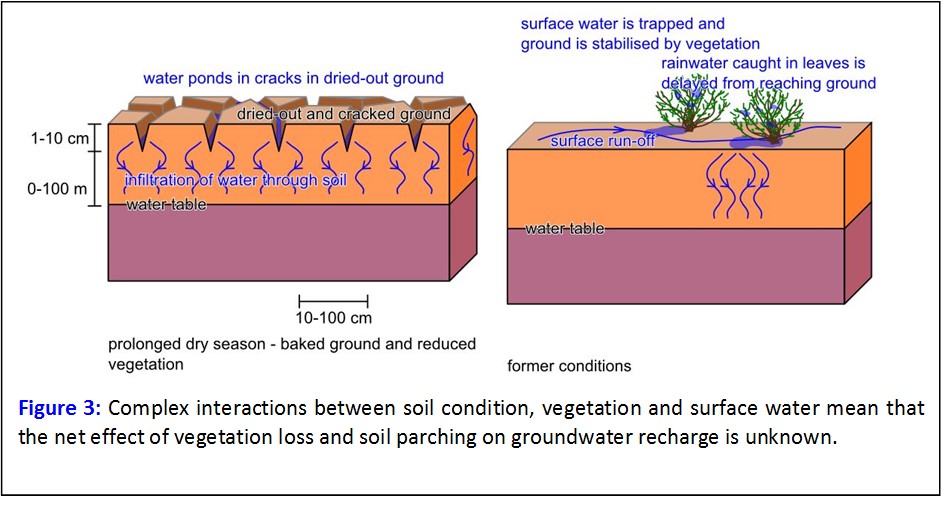 Christopher Barry is a doctoral researcher at the University of Birmingham. He has written for the GfGD Blog in the past – detailing his contribution to water projects in Burkina Faso and fundraising efforts to support such work. We have recently added a briefing note to our website, written by Christopher, describing the role of climate change on global groundwater resources. You can access the full briefing note here.
Christopher Barry is a doctoral researcher at the University of Birmingham. He has written for the GfGD Blog in the past – detailing his contribution to water projects in Burkina Faso and fundraising efforts to support such work. We have recently added a briefing note to our website, written by Christopher, describing the role of climate change on global groundwater resources. You can access the full briefing note here.
To help share the contents of this briefing note we are publishing a portion of it’s contents over a series of four blogs. This is the final instalment, with the rest available in our archives. At the end of each blog is a link to the full PDF, where you can read each section in its full context and find a full reference list.
6. Near-Surface Turbidity
6.1 How it Happens
Intense rainfall will lead to high-energy surface water. This has the combined effect of flooding more ground due to higher river levels and picking up more material from the flooded land because of the higher energy of the water. The material that is picked up will include sediment, but also harmful pathogens (harmful micro-organisms) that are found in excrement. In short, much of the material on the ground is harmful for consumption and more intense water flow has a greater chance of picking this up and carrying it into the groundwater. Turbidity of surface water has a detrimental effect on surface water and shallow groundwater. Even when wells are covered, the effects of turbidity may be seen in shallow groundwater wells, though uncovered wells are affected more seriously. It results from more intense wet seasons, as described in the previous section.
6.2 Threatened Areas
As this is an effect of shorter, more intense wet seasons, this is also a process to which semi-arid regions are vulnerable. Human factors can also make a location particularly vulnerable, in particular poorly contained excrement, either from animals or humans. Excrement placed near a drinking water source is always a hazard, but high-energy water flows make it increasingly likely that pathogens will enter the water source. The type of water source is also important, with shallow wells, wells with improper casing and uncovered wells at the greatest risk.
6.3 Example
A study in Malawi (Pritchard et al., 2008) found that wells abstracting water from shallow groundwater were susceptible to contamination resulting from turbid water on the surface. The most serious form of contamination was microbiological, likely in many cases from nearby sites where human excrement had been dumped. Wells which were not covered at the surface consistently contained dangerous levels of pathogens, but many covered wells (about 90 % in the wet season) also failed to meet standards for safe drinking water for pathogens. Wet season results were worse than dry season and is likely to be due to intense discharge washing pathogen-carrying material into shallow groundwater. If climate change makes peak discharges more intense in the wet season, this problem is likely to worsen over time.
7. Parched Soil and Vegetation: Effects for Groundwater Recharge
7.1 How It Happens
The effect of climate change on the recharge of groundwater in semi-arid regions has not received enough scientific attention to be able to predict reliably.
On the one hand, longer and hotter dry seasons parches the topsoil, causing it to crack. This actually assists the water from the next wet season in being taken into the soil and infiltrating into the groundwater, because water flowing over it ponds in the cracks, rather than flowing away and being lost into the sea.
On the other hand, the harsher dry season conditions lead to a loss of vegetation (plant life). Vegetation helps groundwater recharge by holding rainwater in its leaves for a while before dropping it, and therefore reducing the intensity of water flow on the ground. Tree roots also assist the infiltration of water through the soil into aquifers.
The interacting factors are depicted in Figure 3. Consequently, uncertainty exists as to what effect climate change will have on groundwater recharge with respect to surface conditions.

Download the full briefing note (including a reference list) on the Water and Sanitation page of the GfGD website.
